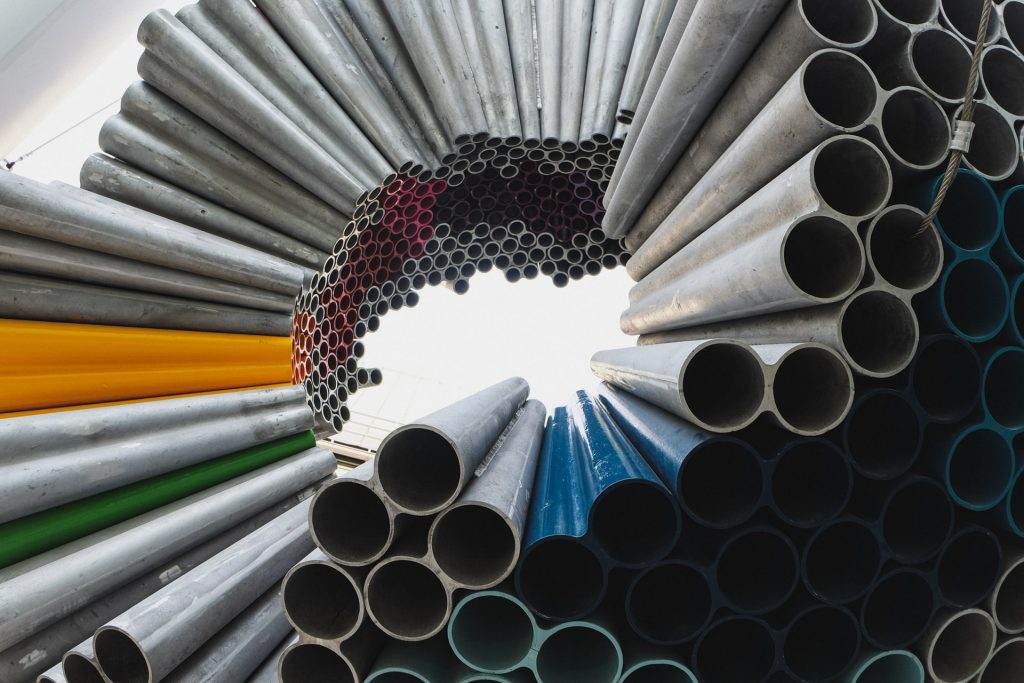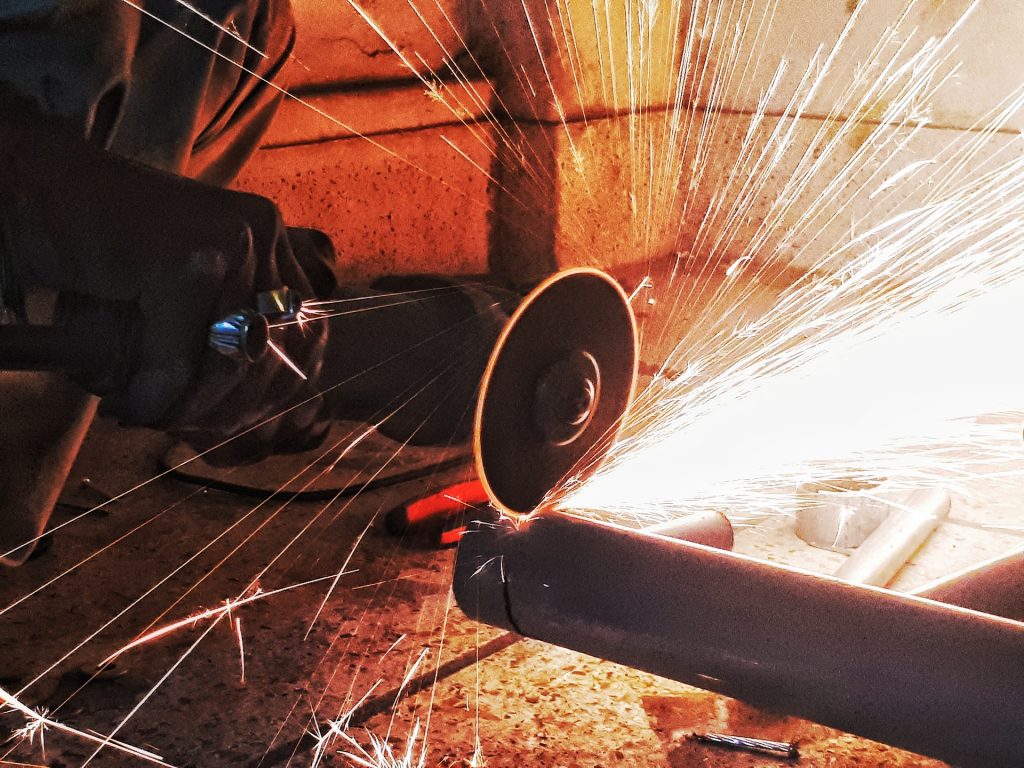Miter saw is the ideal cutting tool for cutting a variety of different kinds of materials.
PVC is an inexpensive and durable material making it perfect for DIY projects. If you want to cut it quickly, then the miter saw is a go-to tool for many people. It can cut smoother and more cleanly than other cutting tools.
Here is a method that we think will help you get the best results.
Quick Summary
By the end of this guide, we will go through
- How to cut PVC Pipe with a miter saw
- Some of the queries related to PVC pipes
Let’s take a look at it.
Cutting PVC pipe with Miter Saw
PVC pipes have plenty of applications due to their durable and inexpensive nature. They are also highly versatile and can be used in plumbing as well as for electrical piping.
PVC consists of plastic which is different to cut as compared to wood. It requires a different level of detail to cut PVC and results are quite different from what you’d expect when cutting wood.
As discussed earlier, a miter saw is an effective tool for cutting PVC pipes. They have different diameters so cutting PVC with different tools can get quite hectic.
You can use a PVC pipe cutter, however, it consumes time and is tough on your hands.
Miter saws have been designed to go through especially wide or long workpieces so they can cut PVC pipes with ease.
We have a way to cut PVC using a miter saw.
Step # 1 – Take Measurements
We recommend that you first make the necessary measurements before making the cut. You can use a lead pencil or a marker for this. To take the measurements, we recommend using a tape measure.
It is always important to keep these tools with you before undertaking any cutting job with your miter saw.
Once this is done, we can move on to the next step which is setting the pipe.
Step # 2 – Setting the pipe
Next, you need to align the pipe to the miter saw. We recommend that you use the laser guide system that comes with your miter saw. This will help you make the cut in a straight line.
You can also set the angle at which you want to cut PVC piping. A miter saw can cut a variety of vertical angles as well as different kinds of cuts. This is helpful when you want watertight pipes.
The blade can either be mounted to make vertical cuts or pivoted sideways. You need to set the blade at the desired angle. You can use the detent plate to measure the angle.
Step # 3 – Secure the pipe
This is the most important step safety-wise. PVC pipes can go back and forth if not secured properly. Never use your hands to handle the pipe as it is quite dangerous. You can seriously injure yourself as the miter saw blades are very sharp.
We recommend that you use the miter clamp to hold the pipe. It comes attached to the miter saw table. Screw it in so that the pipe does not move freely. Adjust the pipe if necessary.
If the job requires a long piece of PVC pipe, we recommend that you secure it to a miter table. This will not allow your pipe to be bent and keep it straight.
Step # 4 – Make the cut
After you’ve completed and ensured all the previous steps, it is time to make the cut.
Power up the saw and let the blade reach its full speed. Then bring the handle down towards the PVC pipe to cut it. Afterward, allow the blade to stop before lifting the blade and releasing the pipe.
Remember to slowly make the cut.
Things to do after the cut
After making the cut, you should check the PVC pipe. This includes verifying the measurements you took. We recommend that you also look out for any burrs in the pipe. Brrs are rough edges made around the cut area.
You can fix this issue by using sandpaper or a knife. Run heavy grade sandpaper through the interior of the pipe multiple times. The brrs will disappear. You should only use sandpaper where there are brrs.
Using the simple method above, you can easily cut your PVC piping using a miter saw.
Things to consider before cutting PVC pipe
Before cutting your PVC pipes, there are a few things you should know and go through. These are mostly utility-related, however, we recommend that you ensure these before continuing with the procedure.
What are the different tools for cutting PVC?
Before you cut PVC, it is important to know that there are different tools for your projects involving PVC pipes. Let’s discuss each one.
Pipe Cutter
There are two types of pipe cutters, scissor-style, and ratchet-style. Both work similarly and are quite inexpensive. You fit the pipe between the pipe cutter and then squeeze the handles.
In the case of the scissor-style cutter, you need to rotate it and squeeze the handle again to cut the pipe.
A pipe cutter can easily cut PVC pipes with a diameter of up to 1 inch. Ratcheting Pipe cutters can cut up to 1.5-inch pipes with ease.
The downside of using pipe cutters is that they are not suitable for frequent use as well as use on thicker plastic. The stress of frequent use can hurt your hand.
Hacksaw
Using a hacksaw is the most common method used for trimming PVC pipes. This is due to the utility of the hacksaw that it can go through different kinds of materials.
Hacksaw works ok but you can end up with burrs on the plastic. Cutting with a hacksaw is also time-consuming as well as inaccurate. It is hard to secure the pipe and it might go back and forth when you cut.
Tip: We recommend that you clean these off the surface using a knife or sandpaper.
Miter Saw
As discussed above, a miter saw is useful if you have to go through multiple pipes at a time. Miter saws are power tools as well as a highly efficient way to cut PVC.
You can set the miter saw at different angles. The issue of securing the pipe has also been resolved through the use of a clamp.
Miter saws, however, are expensive to buy and maintain compared to a pipe cutter or hacksaw. They can also be complex to set up if you are a new user.
Type of Blade
As PVC is plastic, you need to make sure that you are using the right type of blade for the project.
We recommend that you use a laminate blade when cutting PVC pipe. These have a high number of teeth so you will end with a fine cut. Laminate blades also adapt well to other kinds of plastic surfaces.
Dealing with heat damage
You have to be patient when you cut PVC pipes. Miter saw blades generate copious amounts of heat in no time. This can melt your PVC pipe or leave burn marks. These are both aesthetically unpleasing as well as cause problems when fitting the PVC pipe.
To avoid heat damage, we recommend that you use a heat-resistant saw blade. Also, you must avoid rushing through the cutting process. PVC is not like wood when cutting. Make sure that you are slowly cutting the plastic pipe.
If there are rugged edges or heat damage, we recommend that you use a knife or sandpaper. We suggest using heavy-grade sandpaper.

Wrapping things up
We hope that this article helps you when you are dealing with PVC pipes.
PVC pipe can be cut in a variety of ways. However, due to the different diameters of the pipe, it can be a tiring job with handheld instruments.
You might also have problems with cutting it straight. A miter saw solves all these issues. With this, we reach the end of our article on “How to cut PVC pipe with a miter saw”.
Please leave a comment and tell us about your experience.

